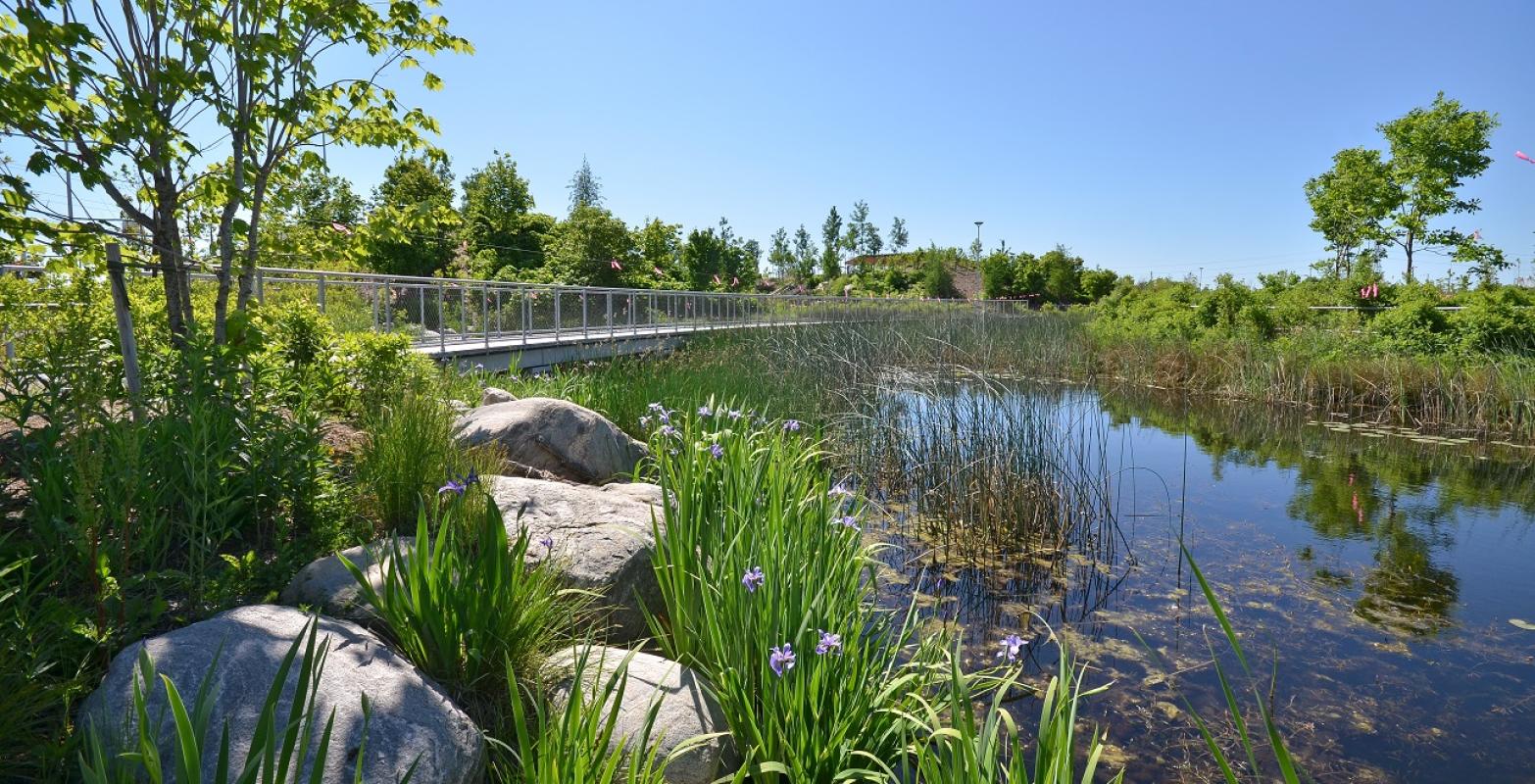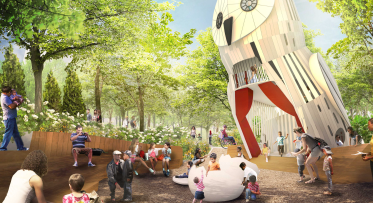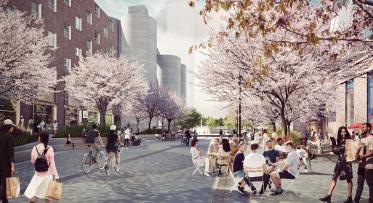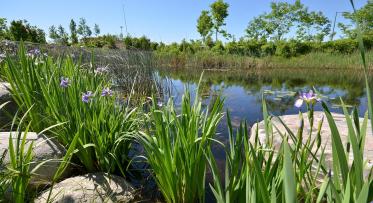Here’s how we report on our social responsibility and sustainability practices
A view of the Corktown Common marsh and surrounding vegetation.
POSTED: NOVEMBER 20, 2018 I SUSTAINABILITY, INNOVATION, DESIGN, ECONOMIC DEVELOPMENT, INFRASTRUCTURE, PARKS AND PUBLIC SPACES, PUBLIC ART
By: Emma Loewen
As a tri-government organization tasked with the revitalization of Toronto’s waterfront, we have a unique role to play in moving beyond standard real estate development practices, and instead creating sustainable, livable and beautiful communities. In addition to master planning undeveloped and underutilized waterfront lands, we believe we have a responsibility to support social and environmental objectives in the communities we build.
Mandating affordable housing requirements, rethinking road design to benefit all users, and committing to build neighborhoods that have zero carbon impact are just some of the ways that we strive to support inclusive and accessible neighborhoods for all.
Today, we are pleased to announce the release of our 2015-2017 Corporate Social Responsibility and Sustainability Report as a look back at what we’ve achieved over the past few years. This is our third installment of the report (previous reports issued in 2012 & 2015) highlighting the progress we have made in achieving broad economic, social and environmental goals.
Reporting transparently on our social responsibility and sustainability outcomes is important to us. While it is not mandatory for our organization, we believe that it’s important to be accountable to our government partners, community members and other stakeholders, and to highlight our successes in an effort to set new global best practices. To ensure that we are reporting on the topics that are relevant to our work and important to our stakeholders, we conducted a materiality assessment to identify key reporting areas. A significant part of this assessment was extensive consultation with external partners, local community members and our own staff. From the assessment, three primary themes emerged and shaped our reporting: Economic, Social and Environment.
Below, we’ve outlined some of the key takeaways of the report within these three themes:
Economic
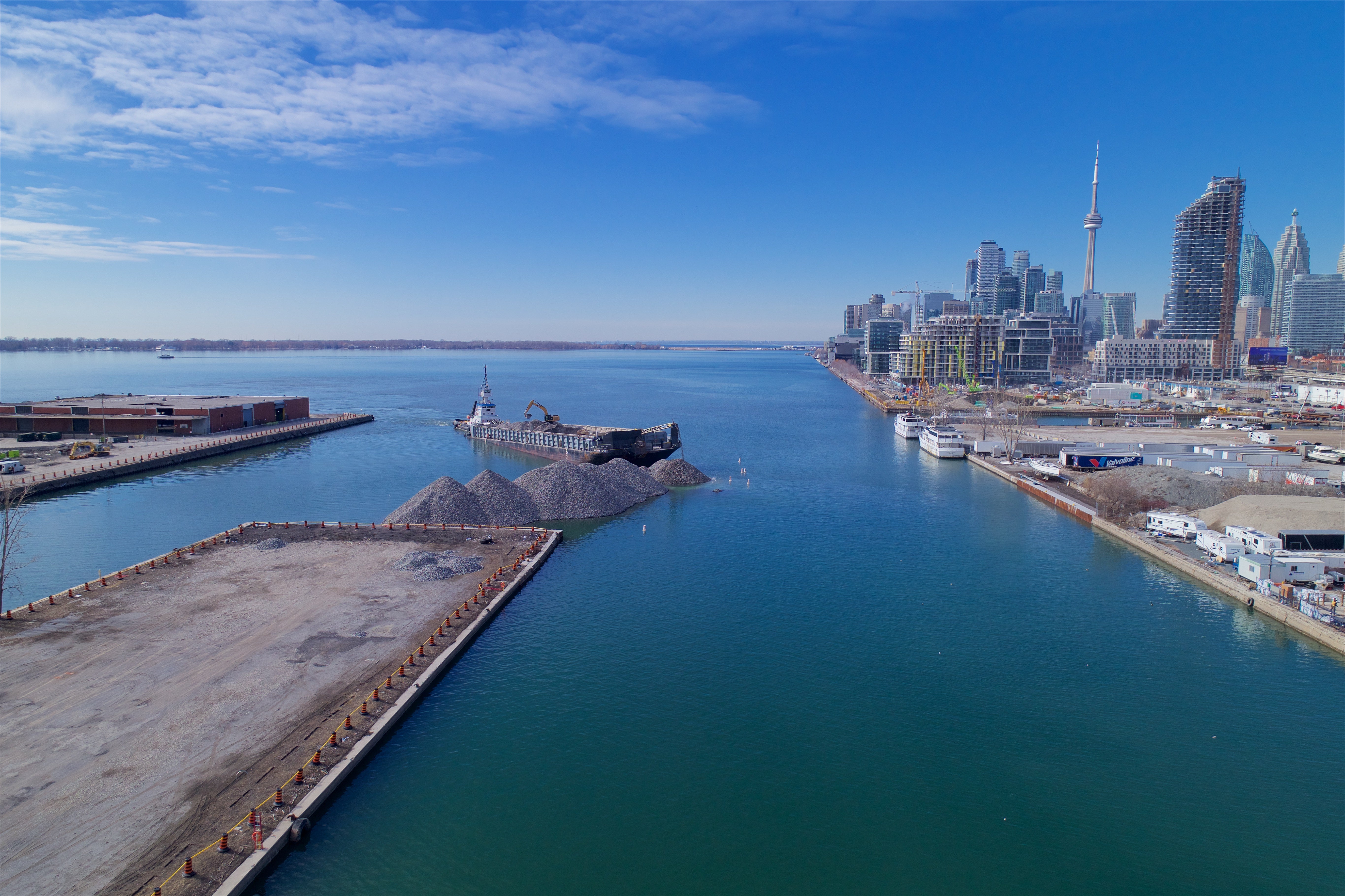
A west-facing view of the lake-filling operations in the Port Lands, which began in December 2017 as part of the larger Port Lands Flood Protection project.
The Port Lands Flood Protection Project and re-naturalization of the Don Mouth will unlock 290 hectares of land for revitalization by removing the area from flood risk. This is our biggest resiliency project to date, with a budget of $1.25 billion and a seven-year timeline. It’s expected that the project will generate $5.1 billion to the Canadian economy and create approximately 51,900 jobs.
Waterfront Toronto has a long history of infrastructure investment in the downtown area. To date, we have completed the construction of 7.2 kilometres of roads, and over 28 kilometres of watermain, sanitary and stormwater sewers along the waterfront.
Social
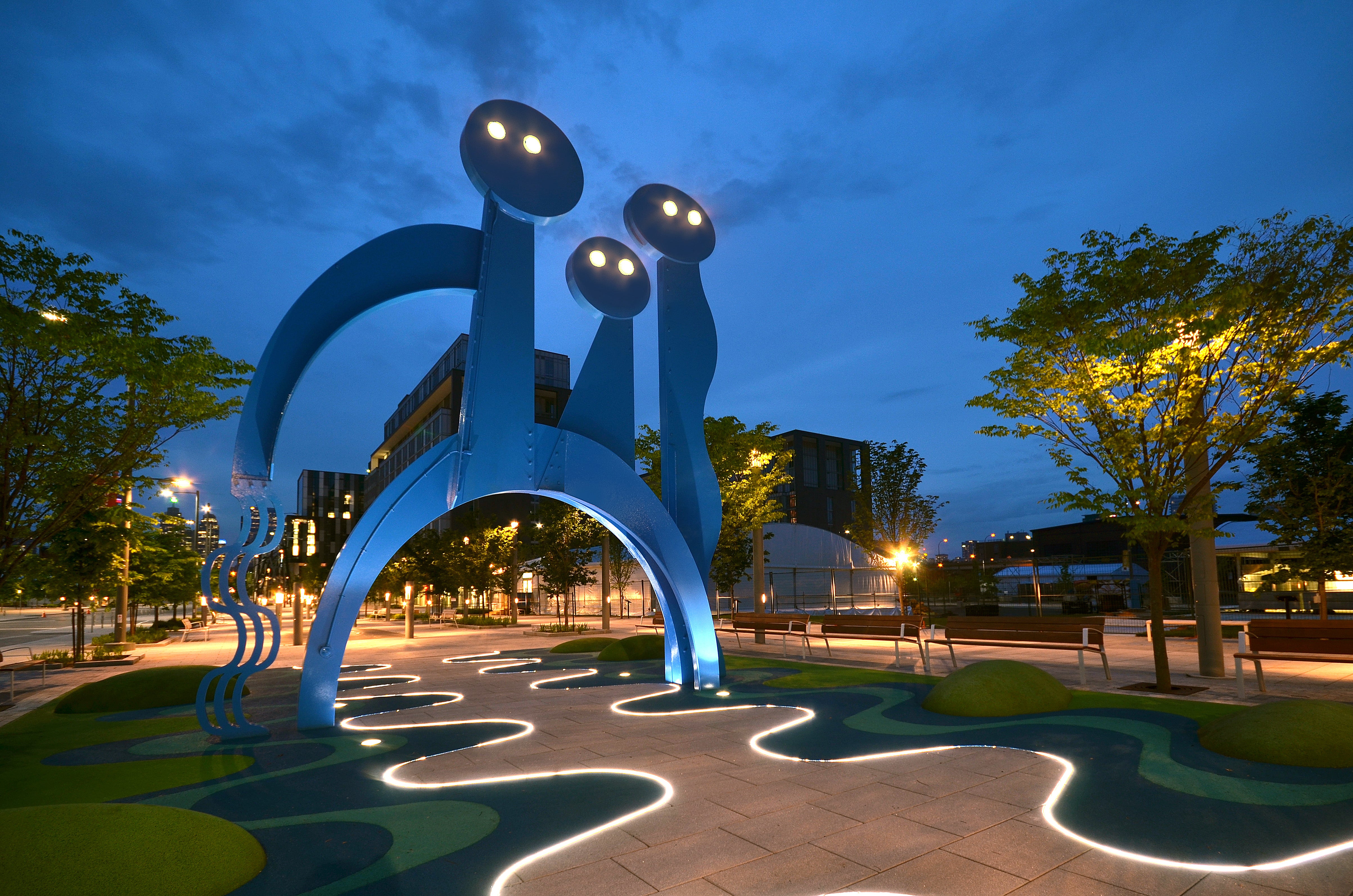
Located along the Front Street East promenade, "The Water Guardians" by Jennifer Marman and Daniel Borins is one of seven public art installations in the West Don Lands.
Waterfront Toronto has a longstanding commitment to building complete communities that feature pedestrian-focused parks and public realm, with a mix of housing options, retail and amenities. As part of this, we require that 20 per cent of all residential units constructed on lands under our control will be affordable (below market value). To date, we’ve created 496 affordable units in the West Don Lands neighborhood, with an additional 695 units planned for the East Bayfront neighbourhood.
Providing Toronto’s residents and visitors with safe and easy access to the water’s edge is another important part of our work. To date, we’ve created over 13,000 linear metres of public waterfront access.
Environment
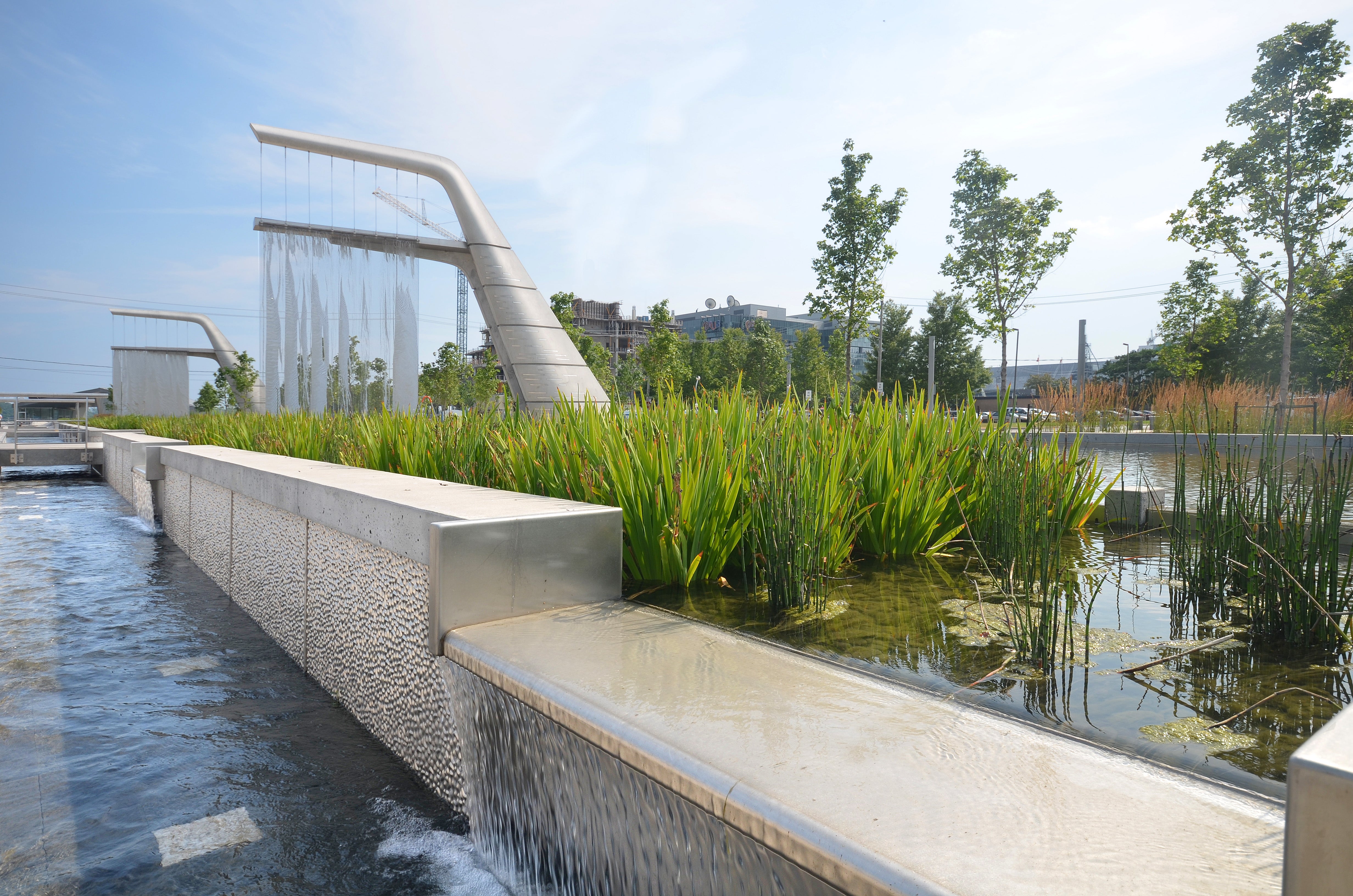
The north side of Sherbourne Common features illuminated art sculptures called "Light Showers" designed by artist Jill Anholt, which are part of an integrated stormwater treatment facility on site.
From our own internal operations to the neighborhoods we create, sustainability and environmental quality are a key tenant of our work. In our office, we support the use of active and public transportation by our employees. In a recent staff survey, 88 per cent of our staff indicated they take public transit, cycle or walk to work.
We’re also committed to a multi-faceted approach to reducing carbon emissions to below zero in our new waterfront neighbourhoods. One of the key initiatives Waterfront Toronto undertook in 2017 was our commitment to build Villiers Island as a climate positive community, joining 17 other cities in the C40 Climate Positive Development Program. Through techniques such as passive building design, supporting public and active transportation and installing renewable energy such as combined heat and power as well as solar panels, Villiers Island could be the first community in Canada to not only reduce their carbon emissions to zero, but add additional clean energy onto the grid that will help reduce carbon emissions elsewhere in Toronto.
We’re excited about the progress we’ve achieved over the past few years. For a more complete picture of our operations and initiatives, check out the full report here. If you have any questions, don’t hesitate to reach out to us at info@waterfrontoronto.ca.
DOWNLOAD THE REPORT

